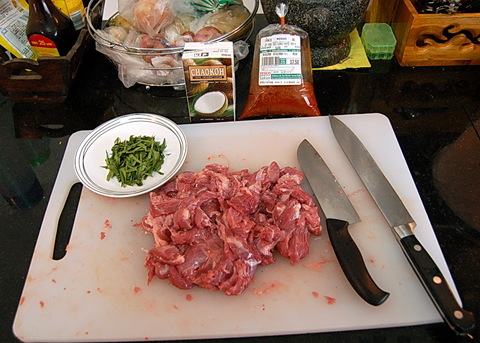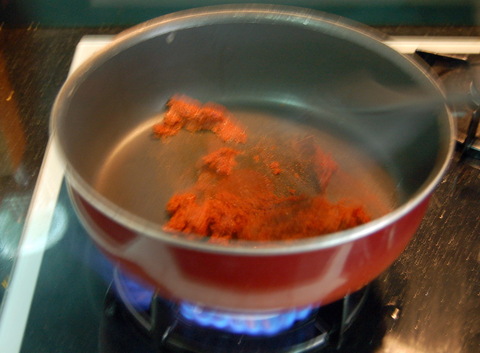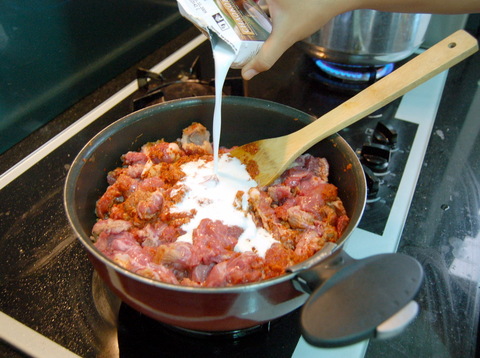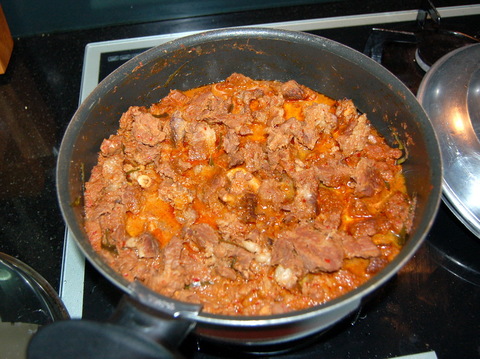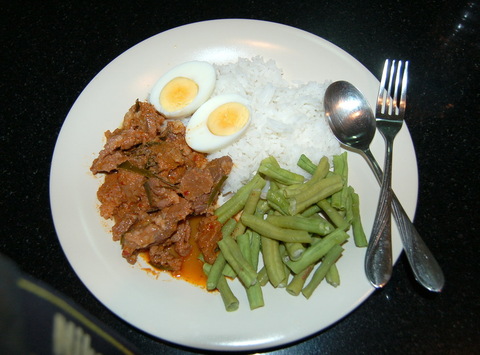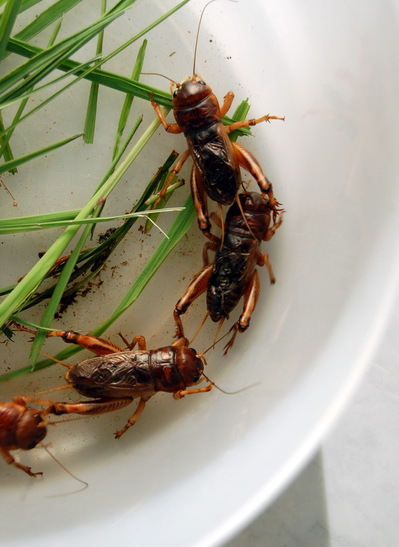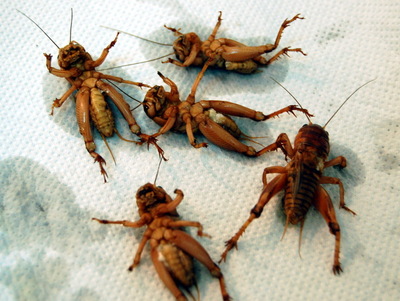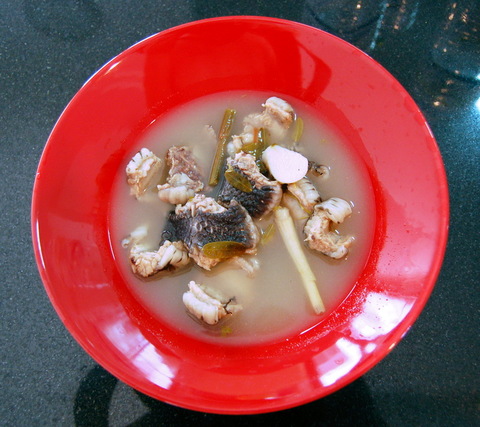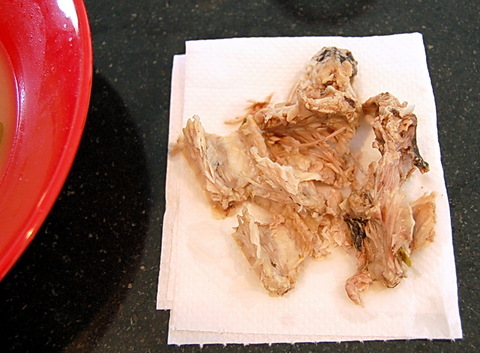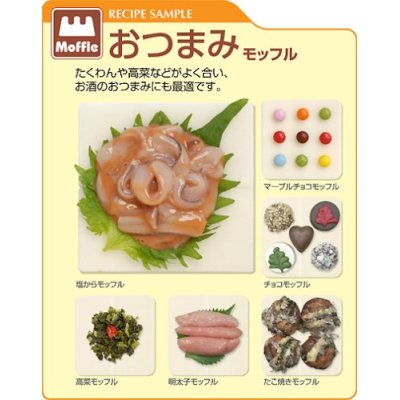I ask that you have an open mind about this post, because the conclusion may surprise you – it sure surprised me.
Here I am with my pal Mickey Rat:
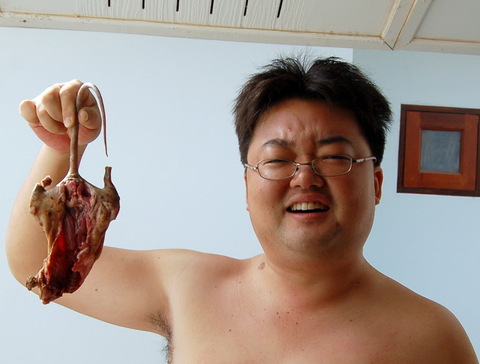
Mickey was a gift from Max’s babysitter’s husband, who went hunting for the fat critters in the rice fields last Friday night. Mickey came dressed and with all fur removed, and upon first inspection seemed clean enough… Why then did the mere sight of Mickey’s long tail cause such feelings of repulsion and disgust in me? Therein lies the irony: Originally, we were to be given a much larger present, but it was determined that such a large specimen might turn us off to rodents all together (This was excellent foresight on the giver’s part.).
To sum things up, I fought through all the icky feelings and prejudices and decided on the spot that Mickey was going to roast on my trusty ghetto grill that very evening. I would call up some friends both to bolster my courage and share this important experience with someone. I had a plan, I had a rat… and I was going to eat it.
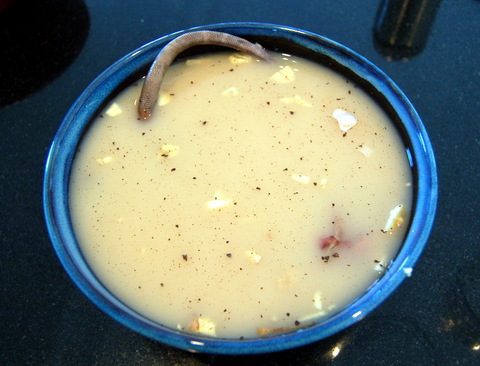
Ingredients for J’s Special Field Rat Marinade
- 1 tbsp. salt
- 1 tbsp. nampla (refined fish sauce)
- some ground black pepper
- 1/2 cup milk
- 30cc cheap whiskey
- whatever crusty remains you can sweep out of your herb drawer
- enough water to immerse rat
The milk is a trick I’ve seen used by grilled chicken vendors. I’d like to believe that there are enzymes in milk that help soften the meat, but the vendors just tell me they do it because that’s how they were taught by their friends. Unscientific bitches.
Anyway, I digress. Mickey was bound for the grill.
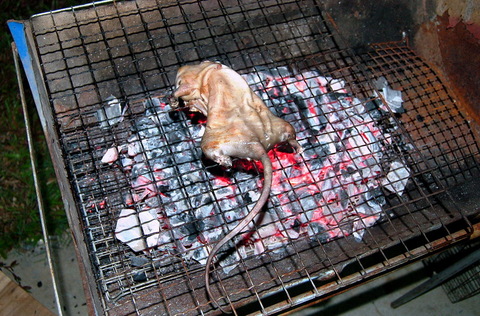
We (by that time friends had arrived) cooked the main course of the night quite slowly. First I seared both sides over the hot spots of the coals and then slow roasted 20 minutes to a side. The skin was quite fatty, like a suckling pig, and drips of juice caused merry flameups over the coals. It smelled… good. After the rat was halfway done, I also started grilling chicken wings which I had marinated in a same same but different kind of marinade. The idea was to use the chicken as a control, since basically everyone says everything takes like chicken.
So what does a fat, juicy field rat that’s eats rice almost exclusively (the people who hunt them know because they open their stomachs to see) taste like? Scroll down for our verdict:
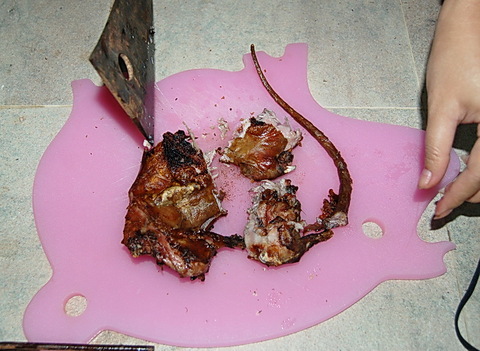
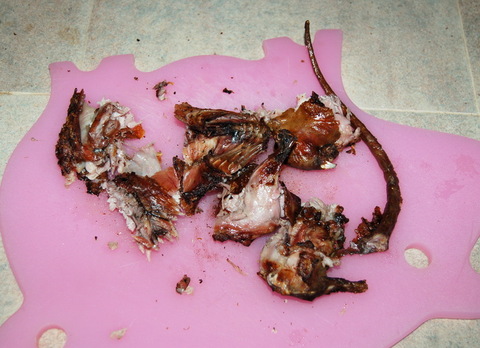
.
.
.
.
.
.
.
.
.
.
.
.
.
.
.
.
.
.
.
.
.
.
.
.
.
IT WAS DELICIOUS.
I couldn’t believe how good it was… First of all, it was perfectly grilled, but you could perfectly grill a marinated penguin and it probably would not taste very good. This was choice meat.
Yes, I would eat it again.
Yes, it did have overtones of chicken. No, it wasn’t smelly or gamey or gross in any way. The marinade and slow cooking rendered the meat soft yet pleasantly textured. The skin was crispy and closest to a roast suckling pig, I think.
/////////////////////////////////
So the next time you encounter a story about how rat meat is coming into fashion in India again or how grilled rat outsells chicken in the Vietnam countryside, just remember: It may not just be because rat meat is cheap. It may very well be because it tastes good.

